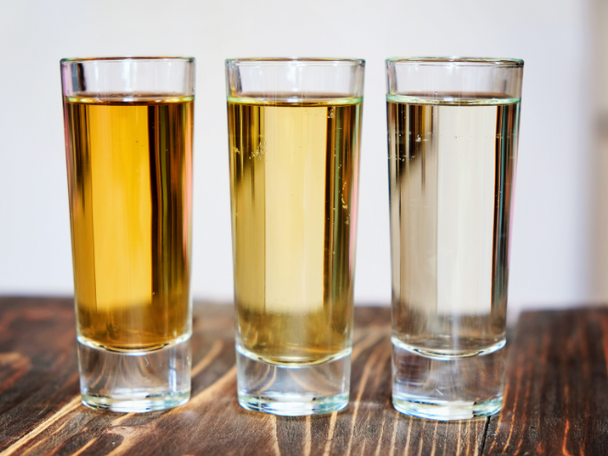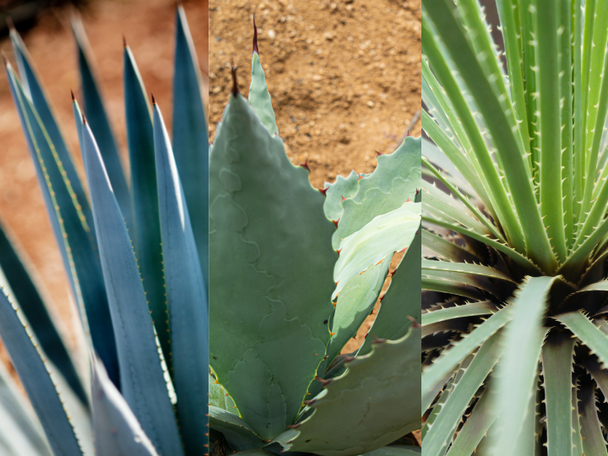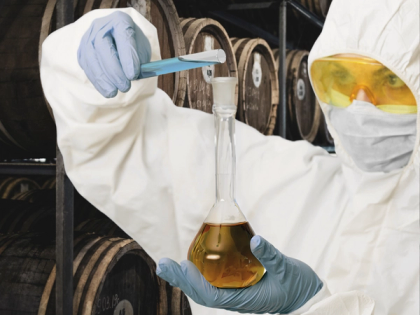
Sip Like a Pro: The Ultimate Guide to Tequila and Agave Spirits
Explore tequila sipping mastery in our blog! Learn 12 steps to enjoy its rich flavors, perfect pairings, and impress friends at your next event. Elevate your tasting journey!
Table of Contents
- Introduction
- The History of Tequila and Agave Spirits
- Understanding the Types of Tequila and Agave Spirits
- How to Drink Tequila and Agave Spirits: Step-By-Step Guide
- The Tasting Experience: Describing Flavors and Aromas
- How to Pair Tequila and Agave Spirits with Food
- Conclusion
- Discover the Ameragave Difference Today
Introduction
Tequila has long been a staple in bars and parties, often seen as a shot to be quickly chased with lime and salt. But premium agave spirits can be much more than just a party drink? In fact, sipping tequila can be an enjoyable drinking experience with complex flavors and depth that rival any high-end spirit.
I'll be honest, it took a while to discover that I loved tequila, because until that time I just had not had any good tequila. Entering the world of premium agave spirits quickly changed my mind.
So put your shot glasses aside and let's dive into the art of sipping tequila like a pro.
As we delve into the art of tequila tasting, it's essential to introduce ourselves. We are Ameragave, an American Agave Spirits brand, where innovation meets tradition. Crafted from 100% Blue Weber Agave—the very heart of authentic tequila—our spirit is a celebration of purity and premium quality, free from any additives. While the techniques and insights shared here are rooted in the rich legacy of tequila, they are equally applicable and revelatory when experiencing Ameragave. We've tailored this article to speak in the familiar terms of tequila, as it's the language most enthusiasts of agave spirits know and love. So, whether you're a tequila aficionado or an agave spirit explorer, the journey of taste we're about to embark on is one you'll find both enlightening and enjoyable.
The History of Tequila and Agave Spirits

Before we delve into the art of sipping tequila, let's first understand its origins. Tequila is a distilled spirit made from the blue agave plant, which can only be grown in specific regions of Mexico. It has been produced for centuries and was originally consumed by native Aztec tribes for medicinal purposes.

Today, tequila is a popular spirit worldwide and comes in various types and flavors, including blanco, reposado, añejo, and extra añejo.
Ameragave Agave Spirits are made from the same Blue Weber Agave. We are technically not a tequila since our spirit is a product of America, but the flavor profile is what you would expect from a premium tequila. Our Silver variant is comparable to a premium blanco while our Gold variant rivals the top extra añejo tequila and is full with deep oak which makes it loved by many traditionally whiskey drinkers.
Understanding the Types of Tequila and Agave Spirits

Not all tequilas are created equal. In fact, there are strict regulations in place to determine the types and qualities of tequila. Here's a breakdown of the different types:

Blanco Tequila: also known as silver tequila or plata tequila, this is unaged and bottled immediately after distillation.

Reposado Tequila: aged for at least two months but less than a year in oak barrels, giving it a pale golden color.

Añejo Tequila: aged for at least one year but less than three years, resulting in a darker color and more complex flavor profile.
Extra Añejo Tequila: aged for a minimum of three years, creating an even smoother and richer tasting tequila.
Apart from tequila, there are other noteworthy agave spirits such as mezcal and sotol that deserve recognition.
Mezcal: Often misunderstood as just another type of tequila, mezcal is a distinct spirit with its unique production process and flavor profile. It can be made from more than 30 types of agave, not just blue agave. The agave hearts are typically cooked in a pit oven, giving mezcal its characteristic smoky flavor. Like tequila, mezcal comes in several styles including joven (young), reposado (rested), and añejo (aged).
Sotol: While not technically an agave spirit, sotol is made from the Desert Spoon plant, a close relative to agave. Produced primarily in the Northern Mexican states of Chihuahua, Coahuila, and Durango, sotol is known for its earthy, grassy flavors and slight hint of citrus. Similar to tequila and mezcal, it also comes in blanco, reposado, and añejo variations.
Ameragave American Agave Spirits: Our spirits are a product of America but are made from the same Blue Weber Agave you've come to love. Our Silver variant would be comparable to a blanco while our Gold variant would be comparable to an extra añejo tequila.
These spirits, each with their distinct flavors, offer a world of exploration for the curious drinker who wishes to venture beyond the realm of tequila.
How to Drink Tequila and Agave Spirits: Step-By-Step Guide

Now that you know the basics, let's learn how to properly sip tequila like a pro.
- Choose your tequila: It all starts with choosing the right type of tequila for your personal preference. Keep in mind that premium and high-end tequilas are usually more suitable for sipping than cheaper options.
- Chill or not to chill: While I prefer to drink room temperature tequila, others like it chilled. It's a matter of personal preference, but both ways are acceptable.
- Serve in the right glass: For drinking tequila, I recommend using a tulip-shaped glass that helps concentrate the aromas. However, you can also use a shot glass or a highball glass if you prefer.

- Notice the aroma: Before your first sip, take a moment to gently inhale the tequila's scent. Bring it close to your nose, and take a deep breath in through both your nose and mouth. This step is crucial to prepare your senses for the complex flavors you're about to taste. The aroma may reveal hints of agave, citrus, vanilla, or the oak barrels in which añejo tequilas are aged. Each tequila has a unique scent, so take your time to savor this part of the experience before tasting.
- Start by acclimating your palate with a sip and swish around your mouth. Your lips, gums and tongue need to get used to the 40% acohol before your taste senses will be able to pick up on the subtleties of the flavor.
- Then take a small sip: Sipping tequila is all about savoring the complex flavors, so start with taking a small sip and let it roll on your tongue before swallowing.
- Skip the salt and lime: While many people are used to taking shots of tequila with salt and lime, this method is not recommended for sipping as it can mask the true flavors of the spirit.
- Sip tequila gently: To fully enjoy the flavors, it's best to sip tequila slowly and gently rather than taking big gulps.
- Experiment with different types: Not all tequilas are created equal, so don't be afraid to try different types such as anejo, blanco, or reposado to discover your favorite flavor profile.
- Don't overlook silver: While aged tequilas tend to get all the attention, silver tequilas can also offer complex flavors and represent the foundation of the spirit for any brand.
- Take your time: Just like with fine wine, sipping tequila should be enjoyed at a slow pace. Take your time to savor each sip and appreciate the complex flavors.
- Mix it up: Sipping tequila doesn't always have to be straight from the bottle. Mixing tequila in cocktails can be a great experience, try margaritas, palomas, ranch waters, or even a classic tequila sunrise.
The Tasting Experience: Describing Flavors and Aromas

When it comes to sipping tequila, there are a few key components to pay attention to: the tequila flavor, aroma, and finish. Here's a breakdown of each:
Flavor:
- Blanco tequilas tend to have fruity and herbaceous flavors with notes of citrus and agave.
- Reposado tequilas have more complexity with hints of vanilla and caramel from the oak barrels they are aged in.
- Añejo tequilas offer even more depth and complexity, with earthy notes and a smooth finish.
Aroma:
- Blanco tequilas have a strong aroma of fresh agave with hints of citrus.
- Reposado tequilas have a slightly sweeter aroma with hints of vanilla and caramel.
- Añejo tequilas have a more complex aroma with earthy and woody notes.
Finish:
- Blanco tequilas typically have a sharp, clean finish.
- Reposado tequilas tend to be smoother and rounder in their finish.
- Añejo tequilas have a long, smooth finish with lingering hints of oak and spice.
How to Pair Tequila and Agave Spirits with Food

Tequila can be a fantastic pairing with food, as its complex flavors can complement a variety of dishes and cocktails. Here are some tips for pairing tequila and agave spirits with different types of cuisine:
- Mexican food: It's no surprise that tequila pairs well with traditional Mexican dishes like tacos, enchiladas, and fajitas. The citrus and herbal notes in tequila can enhance the flavors in these dishes, while the spiciness can be balanced out by the spirit's smoothness.
- Seafood: Tequila's citrus and herbaceous notes make it a great match for seafood like ceviche, shrimp, and white fish. Try pairing with a silver or reposado tequila for a refreshing combination.
- Barbecue: The smoky flavors in tequila can be a great complement to grilled meats like steak, chicken, and pork. Añejo tequilas can add an extra layer of complexity to the pairing.
- Spicy dishes: If you're digging into some spicy food, reach for a high-quality añejo or extra añejo tequila. The earthy notes and smooth finish can help balance out the heat.
- Cheese: Tequila may not be the first pairing that comes to mind when thinking of cheese, but it can actually be a great match. Añejo tequilas pair well with sharp or aged cheeses, while blanco tequilas go well with lighter, fresher cheeses.
Conclusion
Tequila and agave spirits can be enjoyed in a variety of ways, from sipping to mixing in cocktails. The key is to choose a high-quality premium tequila that that you enjoy and experiment with different flavors and pairings to find your personal preference. Remember to always sip tequila gently and savor the complex flavors it has to offer. Cheers! 🍹 So the next time you're at a bar or hosting a party, don't be afraid to order a tequila, whether it's on the rocks, in a margarita, or simply sipped neat. And now that you know how to properly drink tequila like a pro, impress your friends with your knowledge and appreciation for this versatile spirit. Remember: not all agave spirits are created equal, so always opt for a premium, high-end tequila when possible. Tequila may have a reputation as a party drink, but when enjoyed responsibly and with respect for its unique flavor profile, it can be a sophisticated and enjoyable experience. So go ahead and raise your glass of tequila – salud! 🥂
Discover the Ameragave Difference Today
Looking for a top-shelf experience? Discover the unparalleled taste of Ameragave spirits. Each bottle is a testament to the to both tradition and American innovation with how we make agave spirits, offering a symphony of flavors that elevate your sipping experience. From the bold and earthy notes of our Gold, using modern innovation to mature with oak, to the crisp and clear allure of our Silver, Ameragave offers a premium selection for every palate. Whether you love the classic Paloma or prefer a room temperature tequila neat, there's an Ameragave for you. Don't limit yourself to tequila, savor the award-winning taste of Ameragave. Start exploring our collection today. Cheers to the good life! 🍹

FAQ
How do you actually drink tequila?
+
Enjoy tequila neat, on the rocks, or mixed in a highball with mineral water and lime. For more complex flavor, savor it in a fluted tasting glass or tequila glass at room temperature. To get the most out of your sipping experience, suggests large cubes or spheres of ice when served on the rocks.
Are you supposed to drink tequila straight?
+
Tequila can be enjoyed in different ways, but if you prefer it on its own then drinking it chilled neat, on the rocks or straight up is recommended. Do not order it with salt and lime - that is only for shots.
What is the best type of glassware for tequila tasting?
+
For tequila tasting, snifters and goblets with wide openings are the best choice, as they allow for the concentration of aromas. Champagne flutes work great as well.
What is the best way to drink tequila shot?
+
Not at all. While we prefer you sip premium tequilas, if you're feeling thirsty we'd recommend taking a shot of tequila by licking salt off your hand, drinking the shot, and finishing with a wedge of lime - that's the classic "lick, shoot, suck" mantra. I'd honestly be sad to waste a good spirit by taking it as a shot, and life's too short to drink cheap spirits.
Subscribe to our Newsletter
Invisible placeholder to eliminate layout shift





